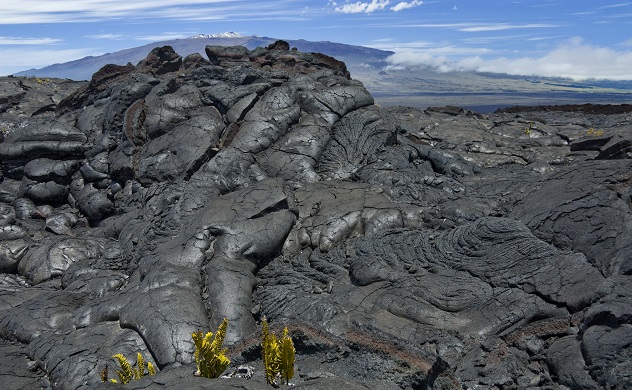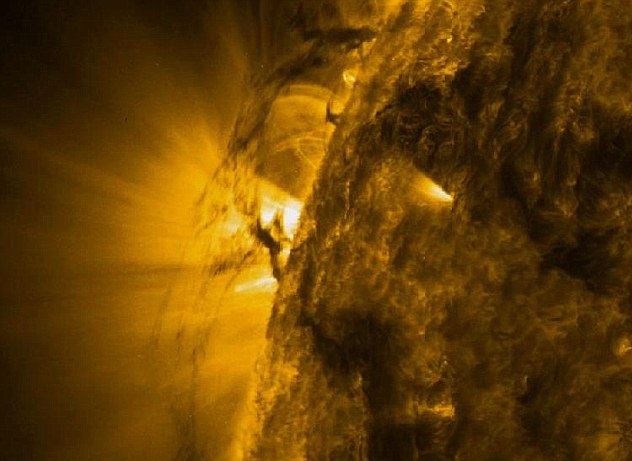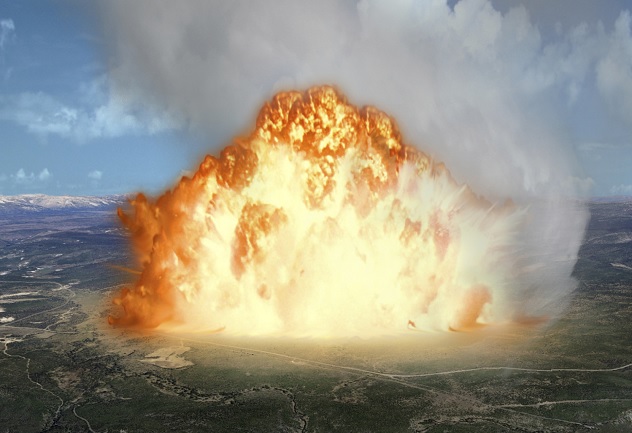 Weird Stuff
Weird Stuff  Weird Stuff
Weird Stuff  Mysteries
Mysteries 10 Tragic Disappearances and Deaths in Joshua Tree National Park
 History
History 10 Ways Childhood Really Sucked in the Old West
 Music
Music 10 Name Origins of Famous Bands from the 1990s
 Religion
Religion 10 Biggest Turnarounds by the Catholic Church
 Weird Stuff
Weird Stuff 10 Unbelievable Times Laws Had Unintended Consequences
 Humans
Humans Ten Historic Women Who Deserve Way More Credit Than They Got
 Movies and TV
Movies and TV 10 Films That Spawned Major Lawsuits
 History
History Ten Times Towns Were Wiped Off the Face of the Earth
 Creepy
Creepy 10 of the Most Disturbingly Haunted Public Houses in the UK
 Weird Stuff
Weird Stuff 10 Niche Subcultures That Are More Popular Than You Might Think
 Mysteries
Mysteries 10 Tragic Disappearances and Deaths in Joshua Tree National Park
 History
History 10 Ways Childhood Really Sucked in the Old West
Who's Behind Listverse?

Jamie Frater
Head Editor
Jamie founded Listverse due to an insatiable desire to share fascinating, obscure, and bizarre facts. He has been a guest speaker on numerous national radio and television stations and is a five time published author.
More About Us Music
Music 10 Name Origins of Famous Bands from the 1990s
 Religion
Religion 10 Biggest Turnarounds by the Catholic Church
 Weird Stuff
Weird Stuff 10 Unbelievable Times Laws Had Unintended Consequences
 Humans
Humans Ten Historic Women Who Deserve Way More Credit Than They Got
 Movies and TV
Movies and TV 10 Films That Spawned Major Lawsuits
 History
History Ten Times Towns Were Wiped Off the Face of the Earth
 Creepy
Creepy 10 of the Most Disturbingly Haunted Public Houses in the UK
10 Misconceptions About Modern Earth
Ever since Apollo 8 showed us a big blue marble rising above the lunar horizon, people have wanted to know all they could about Earth. Today, scientists know a lot more, but not every details makes it into the public ear. This means what we hear isn’t exactly what they’re trying to convey, but it’s close enough that everyone misunderstands each other perfectly.
10Mount Everest Is Moving Sideways, Not Up

Fifty million years ago, the Indian subcontinent decided that it didn’t like the neighborhood south of the Equator and headed north. It eventually smashed into Asia, raising the Himalayan mountain range—including Mount Everest—during the process. Today, at almost 9 kilometers (5.6 mi) high, Everest is Earth’s tallest mountain that is above sea level. Since the India-Asia collision is ongoing, it’s still rising, right?
Wrong, say scientists who have meticulously measured the mountain’s height. Giorgio Poretti, a University of Trieste professor, learned in 1995 that Mount Everest is not actually rising at a meaningful rate—better instruments have simply improved the accuracy of height measurements. Instead, Poretti says, the ongoing continental collision between India and Asia is actually moving Everest northeast at a rate of 42 millimeters (1.6 in) a year.
So on your next Everest trek, you will climb up roughly the same number of meters that Sir Edmund Hillary and Tenzing Norgay did in 1953. However, you will be doing it almost 3 meters (10 ft) to the north-northeast of where they achieved their record-breaking success.
9Mauna Loa Is The Tallest Mountain In The World

Speaking of Mt. Everest—it’s not actually the tallest mountain on Earth. Mauna Loa (which translates to “Long Mountain“) is part of the island of Hawaii. It doesn’t look anywhere near as tall as Everest, but that’s only because it is mostly submerged, and all we can see are their summits.
From summit to base, Mauna Kea measures a little over 10.2 kilometers (6.3 mi), which makes it much taller than Everest. In addition, Mauna Loa brings more weight to the game and that makes all the difference. About half of the Island of Hawaii is part of Mauna Loa. Volcanoes like Mauna Loa are called “shields” because they are wide and have a low profile like, well, a shield. They form when a volcano erupts lava at a very high rate. Molten rock pours out of Mauna Loa so quickly, it has little time to do anything other than pile up and cool.
Mauna Loa has had frequent eruptions for up to a million years and is still very active. You get a lot of volcano with a million years’ worth of output: 80,000 cubic kilometers (50,000 cubic mi) in fact. The Pacific Ocean is about 5 kilometers (3 mi) deep at the spot where Mauna Loa first started erupting. The big lava pile eventually pushed the mountain another 4.17 kilometers (2.59 mi) above sea level.
But there’s more. Mauna Loa’s massive weight has depressed the sea floor down another 8 kilometers (5 mi). Taking that into consideration, this volcano is over 17 kilometers (10.5 mi) high, making it by far the tallest mountain on Earth.
8Tornadoes Are Invisible

Everybody runs for shelter when they see a tornado coming, but how is it that we can see the tornado in the first place? Air is invisible, after all. Well, technically speaking, what we see is actually a condensation cloud made of water droplets and sometimes dirt and debris. It forms inside the invisible funnel of moving air that is the actual tornado.
Tornadoes typically originate in supercells—thunderstorms that look awesome and have a rotating updraft. No one is quite sure what starts the funnel moving downward from the supercell to the ground. It may be related to temperature differences along the edge of the nearby downdraft. Water vapor usually condenses inside the rotating funnel of air as it descends from the supercell, but tornadoes can and do start wreaking havoc on the ground long before the funnel has completely formed.
For instance, here’s a tornado on the ground with the funnel cloud only partly condensed. If this was heading your way and you didn’t see the debris, you might just stand there watching the natural drama. This could be a fatal mistake.
7Clouds Weigh Tons

There are few things prettier than fluffy white clouds floating in a blue sky. We tend to think of such clouds as having no more substance than fog.
However, clouds are actually pretty hefty. The average cumulus cloud—made out of water droplets—weighs 550 metric tonnes (500 tons). Such a hefty behemoth can float because the atmosphere around it is pretty heavy. It’s easy to forget that we and the cumulus cloud exist close to the bottom of the atmosphere. Air molecules have weight, and its air pressure is roughly 1 kilogram (2.2 lb) per square centimeter, or 17.2 metric tonnes (15.5 tons). That’s quite a lot of force against a typical 168 centimeter (5’6″), 63.5 kilogram (140 lb) human. We aren’t crushed by this weight though. because it presses equally over both the inside and outside of our bodies.
Also, air is a fluid just like water. This allows the Archimedes Principle to come into play. The upward buoyant force on the cloud is equal to the weight of the air it displaces. This close to Earth’s surface, that multi-tonne cloud floats in the air for the same reason that a cruise ship floats on water.
6Earth Has Magnetic Tornadoes

NASA experts were surprised when their Messenger mission to Mercury found twisting “tornadoes” over 800 kilometers (500 mi) wide in the planet’s magnetic field.
These “flux transfer events”—or “plasmoids”—form at the point where Mercury’s magnetic field meets that of the Sun. Scientists believe these two are responsible for Mercury’s thin atmosphere. The tornadoes funnel the solar wind—plasma blown outward by the Sun—down onto Mercury’s surface where its electrically charged particles unlock gases that are bound up in rocks.
Scientists have known for a long time that the magnetic fields of Earth and the Sun are connected. This is what causes auroras, after all. What they didn’t know until the Mercury discovery was that the connection is so turbulent. But while Earth has these magnetic events, too, don’t worry. We’re not all going to die. Even though a new event happens about every eight minutes, our planet’s atmosphere is thick enough to protect us from a flood of deadly radiation.
5Rocks Are Inhabited

Have you ever been in a desert or a deep cave and felt as though you weren’t alone? Well, you probably weren’t. The rocks may not exactly have ears or eyes, but tiny life forms called endoliths call them home.
Endoliths are extremophiles, meaning they love extreme environments. They have been found almost 3 kilometers (2 mi) down in bedrock. Most of them live off water and food that fall down cracks, but some actually eat rock and excrete acid that helps them break up more stony snacks.
Temperature is the limiting factor when it comes to how far down into the Earth life can go. Heat radiates out from the center of the planet, and at around 5 kilometers (3 mi) beneath the surface, the rock temperature rises as high as 125 degrees Celsius (257 °F).
No researchers have been able to get that far down into the Earth yet, but studies on extremophiles in hot springs show that they have trouble reproducing at around that temperature. So 5 kilometers (3 mi) down might actually be the limit. These organisms are so tiny that if they’re packed in Earth’s crust all the way down there, then most of the planet’s biomass might be underground.
Since the discovery of endoliths, astrobiologists have been running underground experiments in planetary exploration spacecraft to look for extraterrestrial life that may have settled under our feet.
4Switzerland Rises And Falls Almost 25 Centimeters (10 in) Per Day

Earth isn’t just nutritious to some forms of life, it’s also a little elastic. That’s why Mauna Loa volcano can depress the Pacific sea floor so much.
This elasticity also means that the Moon and Sun can affect the land as well as the sea, although not to such an extent. There is no shore to measure the ebb and flow—large segments of Earth’s surface rise and fall very slowly and almost imperceptibly. But that’s just on plains or anywhere else that doesn’t have a hefty volcano or mountain range to hold it down, right? Not really. Compared to the Sun and Moon, even the Alps are puny.
In fact, very precise measurements have shown that all of Switzerland rises and falls daily on an Earth tide of some 25 centimeters (10 in). However, it only matters if you’re building something finicky like a particle accelerator, since the country’s shift is relative to the “low tide” point on Earth some 10,000 kilometers (6,200 mi) away.
3Cyclones Can Dance

Tornadoes are sometimes called cyclones, but technically cyclones are low-pressure systems with winds spiraling counterclockwise in the Northern Hemisphere and clockwise in the Southern Hemisphere. A cyclone can be a hurricane or any other sort of low-pressure system with the appropriate wind direction.
Sakuhei Fujiwhara was a Japanese meteorologist who figured out that when two cyclones get close enough, they will orbit—or “dance”—around a common center. This Fujiwhara effect only happens if they’re fairly equal in strength. Otherwise, the bigger cyclone will absorb the smaller one.
The world saw a very expensive and destructive example of this in 2012. Most hurricanes in the Caribbean and Atlantic oceans eventually end up caught in westerly winds that blow them away from North America. Hurricane Sandy did this up to a point. It suddenly reversed course and came back to the US and Canada as Superstorm Sandy thanks to an upper level low-pressure system nearby. Its spinning winds moved in the same direction and the Fujiwhara effect started to kick in, bringing the former Caribbean hurricane back toward land. However, because Sandy was bigger, the two storms merged . . . right at landfall, the worst possible place.
2Giant Earthquakes Happen Slowly

An earthquake happens when rocks move along a fault. The fault line can be just a local break—in which case the shaking will also probably be local—or it can be along a major boundary between two tectonic plates. Plate movements store up enormous amounts of energy in the rocks along such a boundary, and when that slips the results can be catastrophic.
Many big earthquakes have foreshocks, but scientists were surprised to find that rocks can creep past each other without any shaking at all. They learned this after deploying extremely sensitive equipment along the San Andreas Fault in California (where the Pacific and North American plates are slipping past each other) and the Alpine Fault in New Zealand (where the Pacific plate is sliding against the Australian continental plate).
The Alpine Fault has had some major earthquakes in the past, but its central section has been disturbingly quiet. Scientists began monitoring it closely, thinking that section might be storing up apocalyptic amounts of potential energy. Instead, they found seismic tremors—a series of small, creeping earthquakes that are further down than typical quakes and last up to 30 minutes each.
Something similar has been found along parts of the San Andreas Fault. Scientists aren’t quite sure what the tremor is up to. It could be storing up stress for a future earthquake, or it might actually be releasing some of that pent-up energy and lessening the intensity of the quake that will occur next time the fault zone slips.
1The Next Supervolcano Eruption Probably Won’t Be At Yellowstone

Yellowstone Park is alive with geysers, hot springs, and boiling mud pots. Some of the fun went out of it at the turn of the 21st century though, when geologists realized that there are such things as supervolcanoes and that Yellowstone Volcano is Exhibit A. Since then, everybody has been wondering when it is going to explode. Well, it turns out that isn’t likely to happen at any time relevant to human civilization. Recent studies have shown that, while there is certainly a lot of magma down there, it isn’t in eruptible form.
There has never been a megacaldera eruption in recorded history, so no one really knows what signs to look for. There could be a lot of earthquakes and other natural disasters before the main event. Then again, ordinary volcanoes sometimes erupt unexpectedly. Quite possibly, supervolcanoes do, too.
One interesting candidate might be Chile’s Laguna del Maule, though the volcano is not currently erupting and shows no threatening behavior whatsoever at the moment. It has simply been inflating at a rate of 24–28 centimeters (9.5–11 in) per year without anybody knowing why.
Laguna del Maule is about the size of California’s Long Valley Caldera and sits on the Argentine border. It has had at least 36 small-scale eruptions over the last 20,000 years. Researchers think they have detected enough eruptible magma down there to produce a VEI 6 eruption (not a supereruption—about the size of Pinatubo in 1991), but they don’t know for sure if that’s all there is.
Barb is a freelance writer who loves to blog about earth science at Flight To Wonder.








